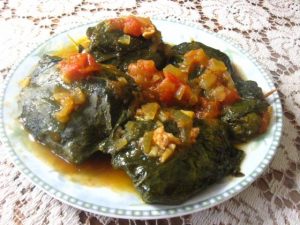What do you think of when you think of mead? You might imagine Vikings with braided beards quaffing something potent out of cow’s horns. Or possibly, jolly Hobbits clinking pewter cups of golden liquid between nibbles of seed-cake and tarts. But mead is no longer the drink of the mythical past.
As the recipe for Ethiopian Tej has been handed down over generations, so has the taste for mead stayed ever-green in the hearts of discriminating hooch lovers. And it’s making a big come-back now.
Mead is probably the oldest known dram, although some like to argue that beer came first. As it’s fairly simple to brew at home, people have been brewing some form of it across Asia, Africa, Europe and the Americas since ancient times.
Where grapes don’t grow for wine, there’s honey to ferment for mead. Archaeologists have discovered residues of a fermented honey drink in Chinese vessels that date back to 7000 BC. Mead was enjoyed in ancient Greece, while around 60 CE, the Roman agriculturalist Columella left a homely recipe for it. Well, he did say that the water should have been “rainwater stored for several years,” probably to ensure that all sediments had fallen to the bottom of the container.
More recently (about 100 years ago), my Ukrainian great-grandmother brewed mead for the family to enjoy during Passover week get-togethers; probably a low-alcohol, kosher-for Passover version to offer instead of beer.
Don’t let anyone tell you different: wine or beer flavored with honey isn’t the same drink at all. (On the other hand, mead flavored with wine grapes is still mead, albeit in a specific category, pyment.) Mead’s base is honey and water, and yeast to ferment it.
It may or not be flavored with spices, fruit, or vegetables. There are as many varieties of honest mead as there are of grape wine, depending on the skill and taste of the mead-maker. Today, no one’s afraid of infusing any flavoring they like into mead. Imagine: pineapple mead. Chocolate mead. Lapsang Souchong mead (I’m not kidding). Varietal mead that shines with the flavors of its original honey only.
You can drink a fun sweet mead infused with chilies at a BBQ or sip a dry mead fermented with cherries at an elegant dinner. Or taste a delicate Swedish mead flavored with elderberries; malted Welsh braggot, or a festive metheglyn spiced with cinnamon and cloves. Red meads, white meads, sweet meads, dry meads.
Mead-makers have long adapted good wine-making practice in brewing the honey potion. Strict attention to cleanliness, fermenting with specially developed yeasts, and fermentation vessels with airlocks to let gases escape while preventing dust and small insects from dropping in – these, and other modern techniques reduce the chances of spoilage and help the home mead maker to produce a gallon or ten of delicious brew in her own kitchen.
Mead’s alcohol varies from 5%, like beer, or up to 20% (appropriate for sweet dessert meads), again depending on the style desired by the mead maker. The encyclopedic Gotmead site provides all the mead recipes and discussions that a mead maker will ever need.
If homebrewing isn’t your thing, Google “meadery” in your locale, and you may be pleasantly surprised to find one near you. While California leads with the largest number of meaderies, commercial mead is sold across the UK, in France, Australia and New Zealand, and even in Costa Rica. New, boutique meaderies pop up all the time.
Time to find out what that honey brew is all about, don’t you think? Want to mead? We supply Joe Mattioli’s Ancient Orange Mead recipe below.

How to make Joe’s ancient mead
Ingredients:
- 1 gallon batch
- 3 ½ lbs Clover or your choice honey or blend (will finish sweet)
- 1 Large orange (later cut in eights or smaller, rind and all)
- 1 small handful of raisins (25 if you count but more or less ok)
- 1 stick of cinnamon
- 1 whole clove ( or 2 if you like – these are potent critters)
- – optional – a pinch of nutmeg and allspice (very small )
- 1 teaspoon of Fleishmann’s bread yeast (now don’t get holy on me — after all this is an ancient mead and that’s all we had back then)
- Balance water to one gallon
A little caveat before you start. This recipe flies in the face of just about all standard brewing methods used to make consistent and good Meads. It was created by Joe Mattioli to make a fast and tasty drink out of ingredients found in most kitchens. It is therefore perfect for the beginner, which has resulted in it being perhaps the most popular Mead recipe available on the internet.
As Joe himself says “It is so simple to make and you can make it without much equipment and with a multitude of variations. This could be a first Mead for the novice as it is almost foolproof. It is a bit unorthodox but it has never failed me or the friends I have shared it with. (snip)…it will be sweet, complex and tasty.”
Follow the instructions exactly as provided and you cannot go wrong. If you want to make larger batches, just scale up the recipe keeping all ingredients in the same proportion.
Process:
- Use a clean 1 gallon carboy.
- Dissolve honey in some warm water and put in carboy.
- Wash orange well to remove any pesticides and slice in eights –add orange. (you can push em through opening big boy — rinds included — its ok for this mead — take my word for it — ignore the experts)
- Put in raisins, clove, cinnamon stick, any optional ingredients and fill to 3 inches from the top with cold water. ( need room for some foam — you can top off with more water after the first few days frenzy)
- Shake the heck out of the jug with top on, of course. This is your sophisticated aeration process.
- When at room temperature in your kitchen, put in 1 teaspoon of bread yeast. ( No you don’t have to rehydrate it first– the ancients didn’t even have that word in their vocabulary– just put it in and give it a gentle swirl or not)(The yeast can fight for their own territory)
- Install water airlock. Put in dark place. It will start working immediately or in an hour. (Don’t use grandma’s bread yeast she bought years before she passed away in the 90’s – wait 3 hours before you panic or call me) After major foaming stops in a few days add some water and then keep your hands off of it. (Don’t shake it! Don’t mess with them yeastees! Let them alone except its okay to open your cabinet to smell every once in a while.
Racking — Don’t you dare
Additional feeding — NO NO More stirring or shaking — You’re not listening, don’t touch After 2 months and maybe a few days it will slow down to a stop and clear all by itself.
Then you can put a hose in with a small cloth filter on the end into the clear part and siphon off the golden nectar. If you wait long enough even the oranges will sink to the bottom but I never waited that long. If it is clear it is ready. You don’t need a cold basement.
It does better in a kitchen in the dark. (Like in a cabinet), likes a little heat (70-80). If it didn’t work out… you screwed up and didn’t read my instructions (or used grandma’s bread yeast she bought years before she passed away).
If it didn’t work out then take up another hobby. Mead is not for you. It is too complicated. If you were successful, which I am 99% certain you will be, then enjoy your mead. When you get ready to make different mead you will probably have to unlearn some of these practices I have taught you, but hey— This recipe and procedure works with these ingredients so don’t knock it.
It was your first mead. It was my tenth. Sometimes, even the experts can forget all they know and make good ancient mead. And there you have it. You have made your first Mead. Now come the steps that must be followed to make a good, and eventually a great Mead.
Photo of glasses with mead by Sam Easterby-Smith via Flickr.




